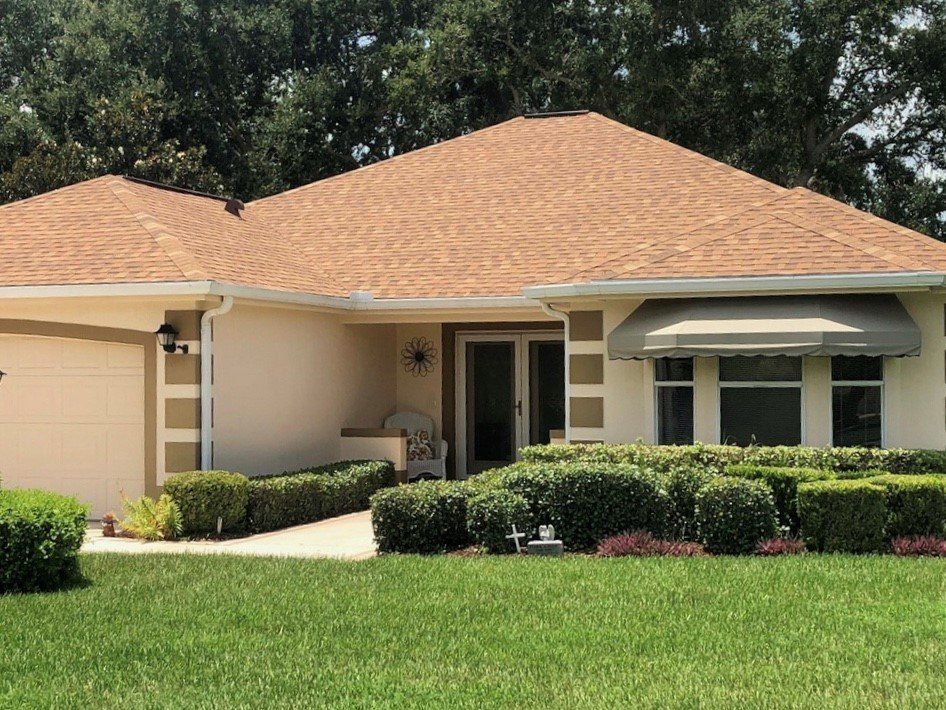How to Spot Roof Damage: A Homeowner’s Guide

Your roof is one of the most important parts of your home, protecting you and your family from the elements. Over time, wear and tear can lead to damage that, if left unchecked, can turn into costly repairs. As a homeowner, it’s crucial to know how to spot roof damage early before it becomes a major issue. Here’s a guide to help you identify common roofing problems like missing shingles, leaks, and damaged flashing.
1. Missing or Damaged Shingles
Shingles are the most visible part of your roof, so they’re often the first indicator of potential damage. Over time, shingles can become worn, cracked, or completely blown off by strong winds.
How to Spot It:
- Walk around your property and look for shingles that are missing, cracked, curled, or uneven.
- Check the ground around your home for fallen shingles or granules (tiny bits of shingle material).
- Inspect the roof from a ladder (or have a professional do it) for visible signs of damage.
- Inside your attic: If you notice sunlight streaming through, it’s a sign that shingles or other roofing materials are compromised.
Why It’s Important:
Missing or damaged shingles expose the roof deck to the elements, which can lead to water infiltration and rotting. Promptly replacing damaged shingles can prevent further damage.
2. Leaks and Water Stains
Water leaks are one of the most common and serious issues that can arise from roof damage. Even a small leak can cause significant damage to your home’s interior, including mold growth, wood rot, and insulation problems.
How to Spot It:
- Look for water stains on the ceilings or walls, particularly in areas like the attic or top floor. These stains often appear brown or yellowish and may increase in size over time.
- Check the attic for visible signs of moisture, such as damp insulation or mold growth.
- During rain: If you notice water dripping inside your home, it’s a clear sign of a leak in the roof.
Why It’s Important:
A leak can cause extensive water damage to your home’s structure and lead to costly repairs. If you catch the leak early, it’s often possible to repair the roof before the damage spreads.
3. Damaged Flashing
Flashing is a material (typically metal) that seals the joints and seams of the roof around features like chimneys, vents, and skylights. If the flashing is cracked, loose, or rusted, it can lead to water seepage.
How to Spot It:
- Inspect around chimneys, vents, and skylights for gaps or cracks in the flashing.
- Look for rust or corrosion on metal flashing.
- Check for loose or lifted flashing that could allow water to enter.
Why It’s Important:
Damaged flashing can cause water to leak into your home, leading to structural damage and potential mold growth. Repairing flashing is a relatively simple task that can prevent bigger problems.
4. Clogged Gutters and Downspouts
While not directly part of the roof, gutters and downspouts play a crucial role in managing water runoff. If they’re clogged with leaves, debris, or moss, water can back up onto the roof and cause damage over time.
How to Spot It:
- Check gutters for debris: Leaves, twigs, and dirt can block the flow of water, causing it to pool on the roof.
- Look for sagging gutters: This could indicate that the weight of the debris is causing structural damage.
- Inspect downspouts for proper water flow. If water isn’t draining away from the roof, it can lead to leaks and water damage.
Why It’s Important:
Clogged gutters prevent proper drainage, which can lead to water pooling on the roof and potentially damaging shingles, flashing, and the roof deck. Regular gutter maintenance helps protect your roof.
5. Granules in the Gutters or Around the Foundation
Asphalt shingles shed granules over time. These granules protect the shingles from UV rays and help them remain durable. If you notice an unusual amount of granules in your gutters or around your home’s foundation, it’s a sign that your shingles may be deteriorating.
How to Spot It:
- Look in your gutters for dark, sandy granules that are often an indicator of shingle wear.
- Inspect the roof for thinning or bald spots, where the granules have worn away.
Why It’s Important:
Shingles without granules are more vulnerable to UV rays, which can cause them to break down more quickly. This can shorten the lifespan of your roof and make it more prone to leaks.
6. Sagging or Uneven Roof Deck
A sagging roof deck is a serious issue that often indicates structural problems. If the roof’s underlying frame or decking is compromised, it can lead to larger problems, including total roof collapse.
How to Spot It:
- Look for noticeable dips or sagging areas when you inspect the roof from a ladder or the ground.
- Check the attic for signs of sagging beams or rafters.
Why It’s Important:
A sagging roof could mean the underlying structure is failing, possibly due to water damage or rot. Immediate professional repairs are essential to avoid a potential roof collapse.
What to Do If You Spot Damage
If you notice any of the above signs of roof damage, it’s essential to take action as soon as possible. Here’s what you can do:
- Inspect the roof (safely) or hire a professional roofer to evaluate the extent of the damage.
- Schedule repairs as soon as possible to prevent further damage.
- Consider a full roof inspection if you’re unsure about the overall condition of your roof.
Regular roof inspections and maintenance can help extend the life of your roof and protect your home from water damage and costly repairs. If you suspect roof damage or need a professional inspection, don’t wait—contact Quality Services Roofing today to ensure your roof stays in top shape!


